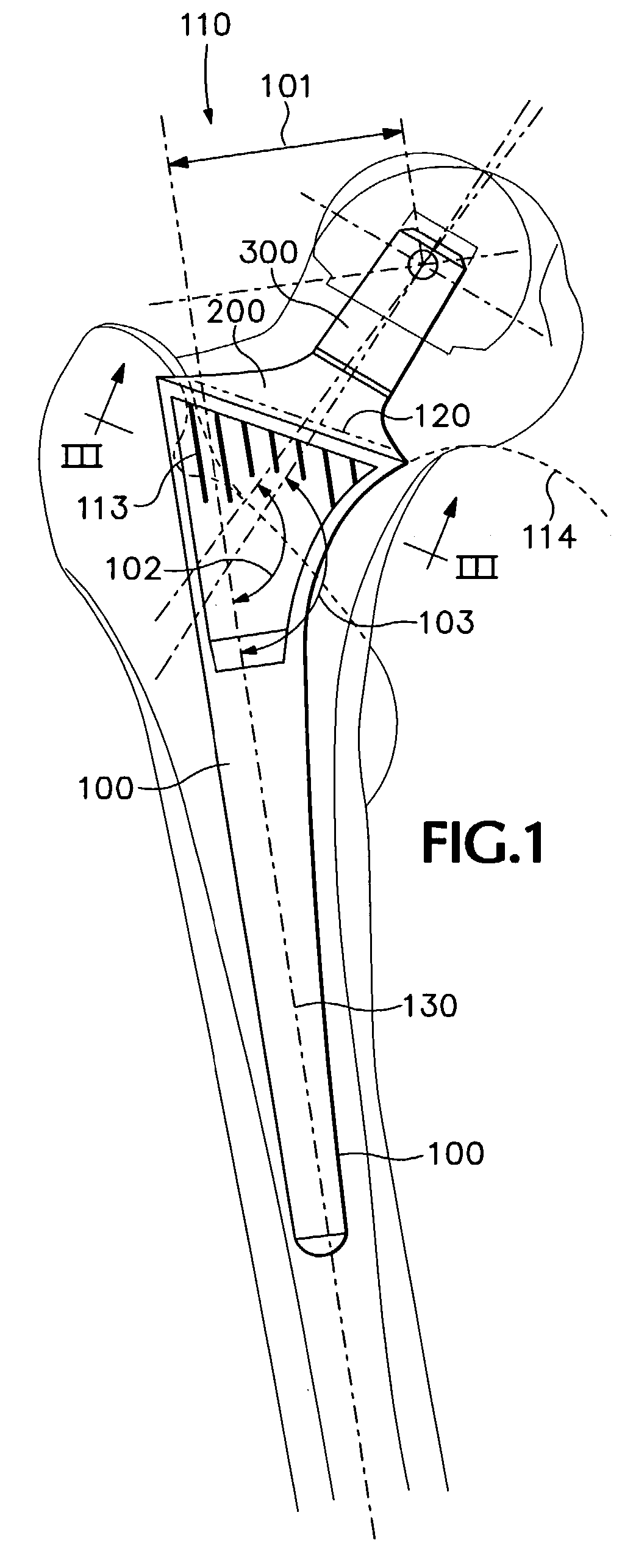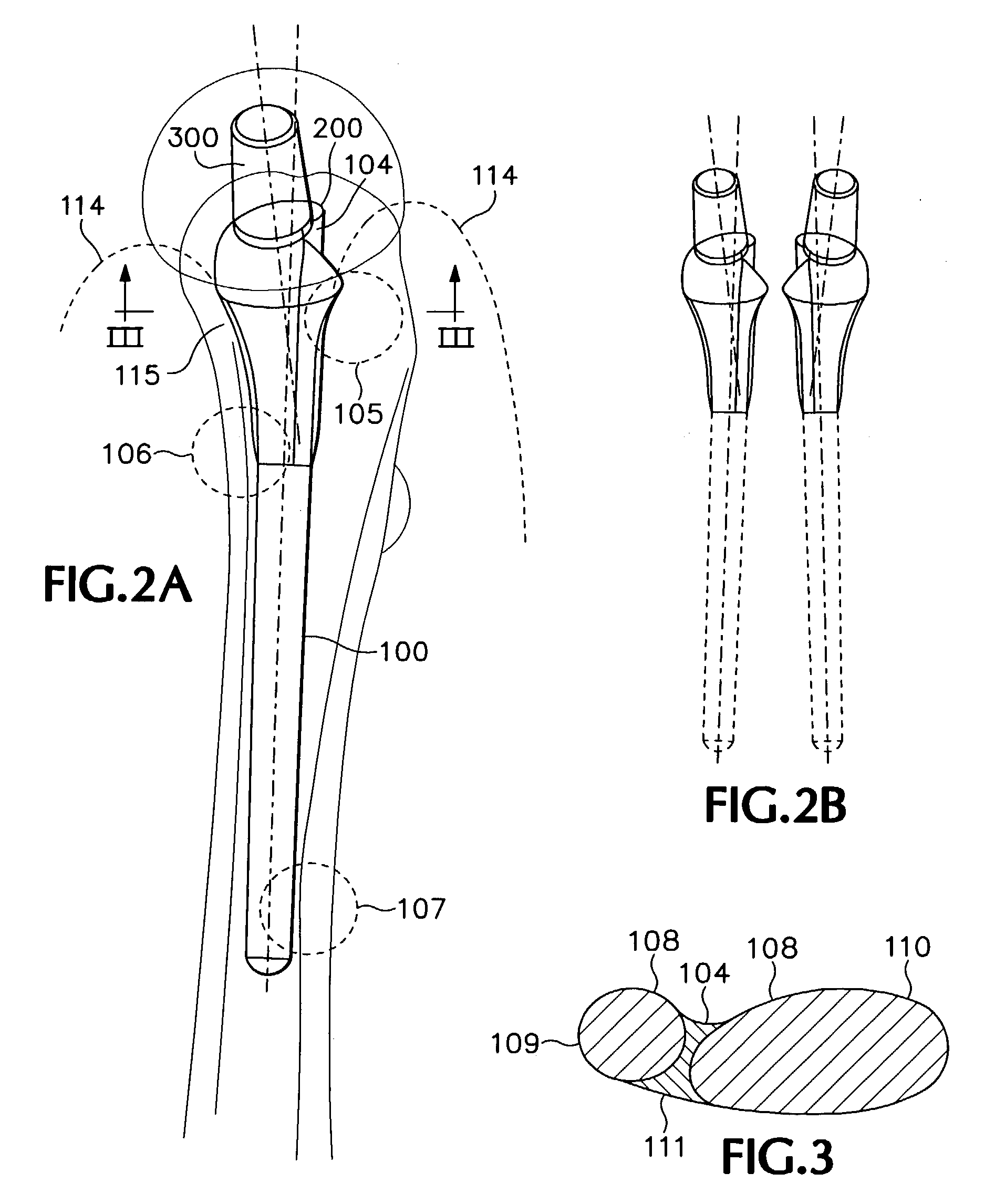Neck-preserving-stem NPS
a technology of preserving stems and nps, applied in the field of neck-preserving stems, can solve problems such as substantial torque load
- Summary
- Abstract
- Description
- Claims
- Application Information
AI Technical Summary
Benefits of technology
Problems solved by technology
Method used
Image
Examples
Embodiment Construction
[0006] One of the substantive elements of the prosthesis stem is the straight-line opening of the medullary canal through the greater trochanter (FIG. 01 / 110). The entire neck of the femur (FIG. 01 / 120) is preserved through the osteotomy. The design of the stem (FIG. 01 / 100) allows it to be inserted in a straight line, provided that a guide instrument in the opening canal can be inserted into the medullary canal without encountering resistance. This is the case when the opening has been executed correctly along the dorsal wall of the neck in a straight extension of the canal axis through the greater trochanter. The dorsal wall of the neck forms a straight line with the dorsal wall of the medullary canal.
[0007] The design of the prosthesis takes this anatomy into account and utilizes a cylinder (FIG. 03 / 109) as a design element located around the canal axis (FIG. 01 / 130) around which the stem is designed to coincide with the anatomical clearances (FIG. 02.1), which results in symmetr...
PUM
 Login to View More
Login to View More Abstract
Description
Claims
Application Information
 Login to View More
Login to View More - R&D
- Intellectual Property
- Life Sciences
- Materials
- Tech Scout
- Unparalleled Data Quality
- Higher Quality Content
- 60% Fewer Hallucinations
Browse by: Latest US Patents, China's latest patents, Technical Efficacy Thesaurus, Application Domain, Technology Topic, Popular Technical Reports.
© 2025 PatSnap. All rights reserved.Legal|Privacy policy|Modern Slavery Act Transparency Statement|Sitemap|About US| Contact US: help@patsnap.com



